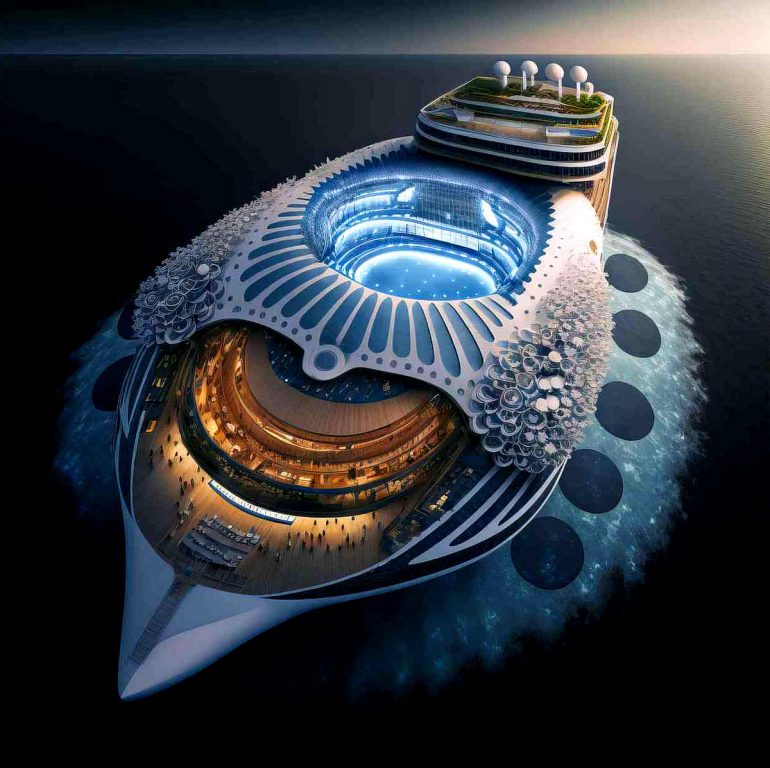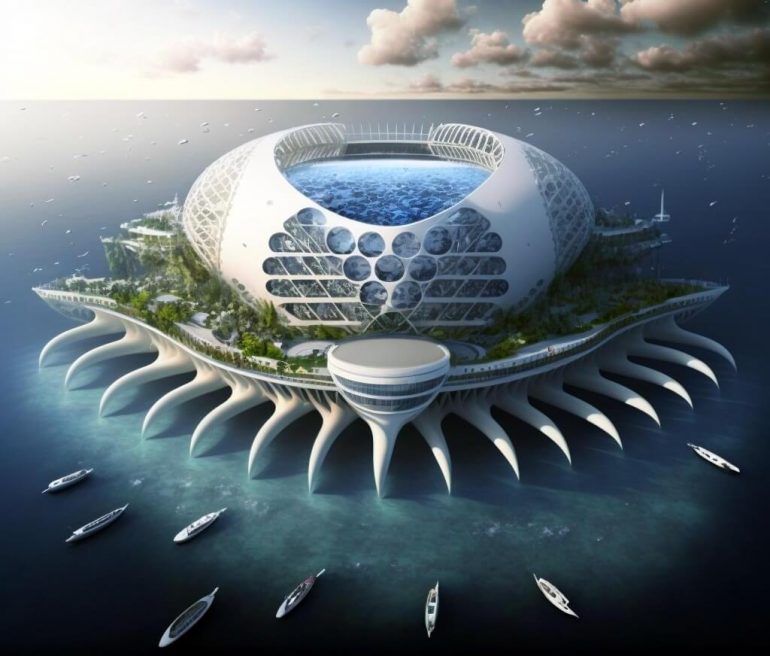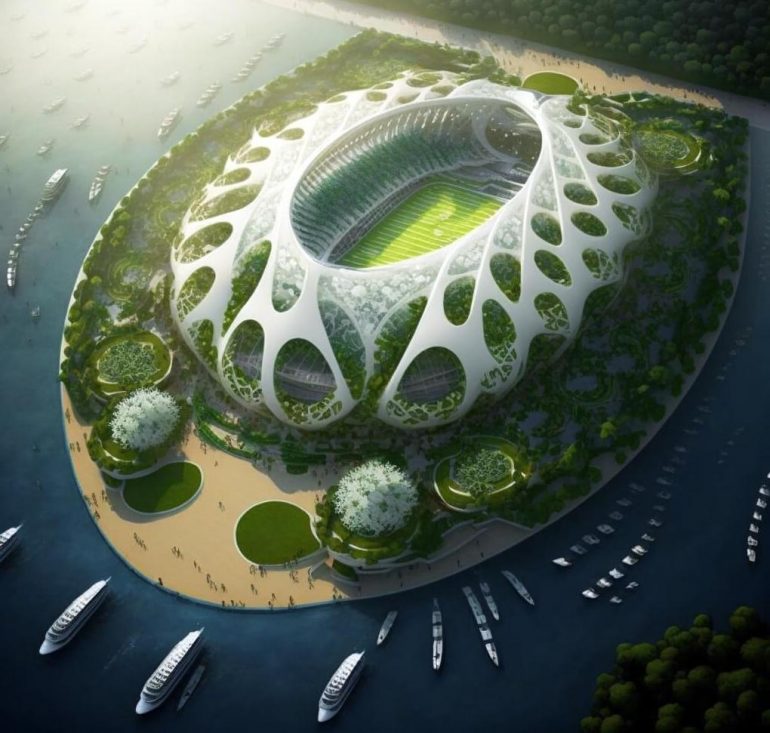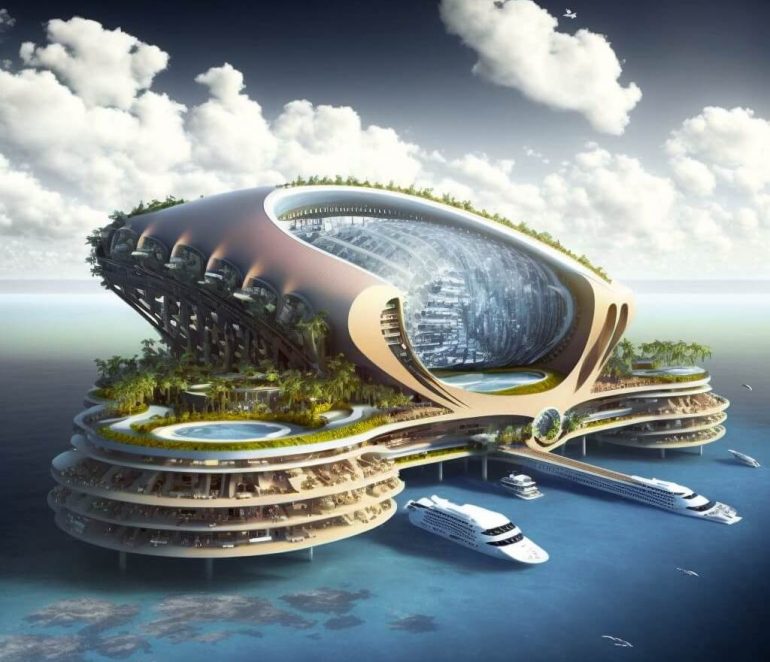The notion of simplicity and stadiums seems to be a thing of the past, especially when considering Vincent Callebaut Architectures’ groundbreaking concept of Oceaniums.

These futuristic floating stadiums defy convention, promising to astonish spectators, offer unprecedented access to a new realm, and revolutionize the landscape of global sporting events. Designed with the 2026 FIFA World Cup in mind, Oceaniums present a paradigm shift where stadiums become mobile, moving to the fans instead of vice versa.

Described as half-ships, half-stadiums, this visionary project by the French architectural group envisions constructing these floating marvels on water, departing from the traditional land-based approach. Engineered using sustainable materials such as recycled solid wood, aluminum, green algae, and plastic waste collected from the seventh continent, these low-carbon community hubs are set to redefine the way we perceive sports venues. Functioning on renewable energy sources like solar radiation, wind energy, and ocean currents, Oceaniums aim to be environmentally conscious and self-sufficient.

This avant-garde design team seeks to disrupt the sports industry by introducing a novel perspective to cultural and athletic traditions. Bid farewell to outdated stadiums, and welcome the era of innovative, remarkable, sustainable, and eco-friendly mobile stadiums. The organic geometries of Oceaniums draw inspiration from biomorphism, with optimized structures influenced by bionics, and an ecosystem life cycle mimicking biomimicry.

Their appearance is reminiscent of calcifying coral reefs, the skeletal structures of cetaceans filtering saltwater, and bioluminescent animals. These floating stadiums are not just sports venues; they are dedicated biodiversity hotspots, fostering the growth of marine life in an unprecedented and revolutionary manner.
